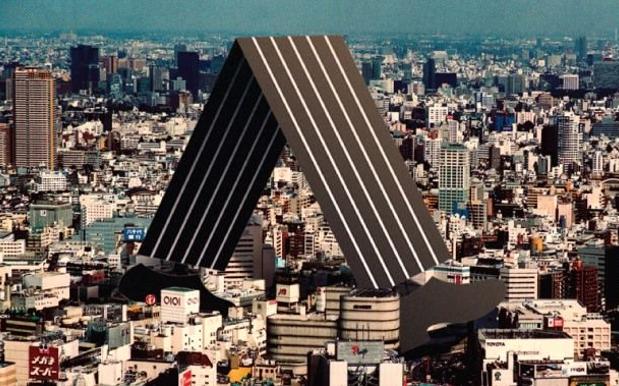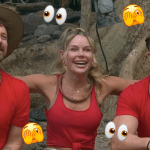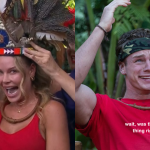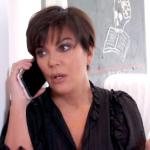
I almost didn’t make it to see Alan Ball in conversation with Wil Anderson at the Sydney Opera House last night. Having read almost every interview (including this one) and feature article published in the lead up to his solo stage debut, I felt like I was (and you’ll have to excuse the irresistible pun, because there are so many) on the ball, in terms of his showreel, his themes, his process and his oft-quoted anecdotes. I did, however, come to my senses and snag a last minute ticket to the Ball in the Concert Hall, and although I was by myself (uniBalling if you will) I certainly wasn’t alone amongst a throng of super fangs fans who listened intently, asked some pretty long-winded questions (Yes, you, Lady with the accent in stage-left Platform Box D Seat 22: know when to stop), laughed and bawled as they revisited some truly transcendent moments (the plastic bag!) in recent film and televisual history. Here are a few of the things I learned (read: can remember) from an evening with Alan Ball: Vampires, Death and the Mundane:
1. Alan Ball wanted originally to be an actor. However, he and his friends were never cast in the college productions to which they aspired, leading him to writing, which he realised (in his second year at college) was what he wanted to do. I think I can speak for everyone in attendance last night when I say, thank God he couldn’t act.
2. One of his first writing jobs was for a sitcom called Oh, Grow Up, which involved a talking dog whose thoughts were communicated via subtitles. The idea was universally hated. Sound familiar, Mike Mills? The talking dog went on to become something of a conversational motif throughout the evening, ensuring many a laugh was had.
3. Death obviously featured prominently throughout the evening. When asked how he’d like to go, Ball replied that he would like to have his cremated ashes stuffed inside said talking dog. Again, many laughs.
4. When HBO first came to Ball with the proposal for Six Feet Under during his time at the critically-panned sitcom, he instantly clicked with the concept of a ‘family living in a funeral home’ but couldn’t commit at the time. Having been confronted with death head on very early on in life, Ball immediately identified with the horrible (I think he said ‘fucked up’) suppression of grief and emotion experienced in funeral homes, his own mother having been whisked off behind a curtain at the first visible sign of her grieving at her daughter’s funeral. His own experiences with his sister’s death and her subsequent showing in an open casket would later go on to inform his time writing at Six Feet Under.
5. Again, when first optioned by HBO, Ball was still attached to Oh, Grow Up. When ABC ‘graciously’ cancelled the flailing sitcom, Ball was free to resume writing the pilot for Six Feet Under so that when HBO got back to him, they asked him to ‘make it more fucked up.’ So he did. Everyone liked that bit.
6. The final scene from Six Feet Under makes everyone cry. Even if you haven’t seen any of the episodes leading up to it. Also, Wil is friends with Sia Furler and cried his eyes out when he watched it alone in a hotel room. Everyone agreed.
7. The plastic bag moment from American Beauty actually happened to Ball in real life. Ball was walking back from Sunday brunch through an empty World Trade Centre Plaza one day, and this bag was, like, dancing with him. Like a little kid begging him to play with it. For fifteen minutes. And that’s the day he knew there was this entire life behind things, and… this incredibly benevolent force, that wanted him to know there was no reason to be afraid, ever.
8. In another instance of art being inspired by life, the genius dialogue in American Beauty between Angela and Jane (“You total slut, you have a crush on him. You’re defending him, you love him, you wanna have, like, ten thousand of his babies.”) was inspired by an incident at a U2 concert when a teenage girl got up in front of Ball and screamed “I love you Edge, I wanna have, like, ten thousand of your babies!”
9. Ball first encountered Charlaine Harris’ Sookie Stackhouse novels when he arrived thirty minutes early to the dentist one day, not knowing how to time the distance between his house and the surgery in spite of his having lived in Los Angeles for fifteen years. Thank you, LA traffic, for your fortuitous inefficiency.
10. Australian (and presumeably other international) actors have less hang-ups about nudity on-screen than their American counterparts. Anna Paquin and Stephen Moyer started hooking up by the second episode of season one of True Blood! But apparently they aren’t together anymore, which was news to me. That doesn’t matter, though, because they are ‘consummate professionals.’ Although apparently things can get a bit weird now that their characters have started hooking up with other characters on-screen. Including Alexander Skarsgård, who Wil would turn for, repeatedly. Again, everyone agreed.
11. When asked how he writes powerful female characters, like Sookie Stackhouse, Ball revealed that he has ‘a big girl inside of me’ that enables him to do so.
13. When asked for some encouraging words that an English teacher might pass onto her students to inspire them creatively, Ball quoted a Buddhist aphorism to ‘follow your bliss,’ which basically translated to ‘do what makes you happy.’ So Zen. So true.
Alan Ball in conversation with Alan Brough
Saturday 10 September, 7.30pm
Wheeler Centre, Melbourne
Purchase tickets here
True Blood season four airs Thursdays at 8.30pm on Showtime (Foxtel).



